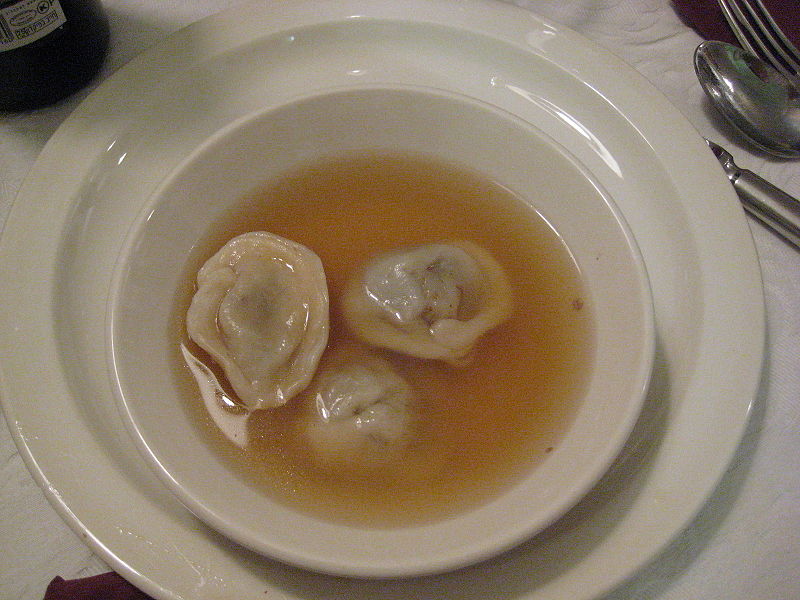Get stuffed! No, I mean that in the most friendly way. Sukkot is almost here and although Jews tend to take food seriously at all Jewish festivals, during the combined holiday of Sukkot – along with Hoshana Raba and Simchat Torah – there is a particular emphasis (a mitzvah?) to eat stuffed food.
Why the connection? Rabbi Mark Hurvitz offers this culinary metaphor. Sukkot “includes the notion of welcoming guests (both living and historical heroes) into the sukkah, thus ‘stuffing’ them into a wrapper of sorts. Ruth Heiges suggests stuffed vegetables are like “miniature cornucopia symbolizing the plenty with which we have been blessed and for which we hope throughout the coming new year.”
Rabbi Yehuda Shurpin provides two more reasons – literary and graphic. He explains that cabbage (as in cabbage rolls) has a connection to the holiday because the Hebrew name for the food is כרוב (keruv), which has the same letters as ברוך, (baruch) “blessed.” And then the rabbi paints this picture: “the most commonly given reason for eating rolled cabbage on Simchat Torah is that two rolls side by side resemble the closed Torah scrolls with which we dance on Simchat Torah.”
Make Stuffed Cabbage like the Pros
In Succulence for Sukkot and Simchat Torah, the late Gil Marks writes that filled foods symbolize bounty. “Stuffed vegetables – a most ancient Sukkot dish, probably having its genesis with the grape leaves remaining on the vine after the harvest that were then filled and simmered until tender – are common sights on holiday tables in all communities. As there were few or no grapes in much of Northern and Eastern Europe, the prevalent cabbage became a handy substitute. … Sephardic fare include eggplant stews, green beans, vegetable salads and filled phyllo pastries.”
Browse through the Sukkot section of one of the premier Jewish cooking sites and you’ll find dozens of recipes for stuffing just about any vegetable – or fruit – you can think of: squash, zucchini, artichokes, eggplants, avocados, tomatoes, beets and dates. And of course, cabbage.
Joan Nathan’s Ultimate Stuffed Cabbage
Who could ever imagine that the lowly cabbage roll could be the source of marital friction? The blogger Miriyummy isn’t afraid of working hard in the kitchen. She hasn’t bought a challah in almost a decade. But oh the time and effort to shape, stuff and cook cabbage rolls. So Miriyummy preferred the simpler “Unstuffed Cabbage.” But then marriage came along and a husband who “thinks unstuffed cabbage is an abomination. He had it once at my house while we were dating, and decided to quote Rabbi Meir Kahane and say “Never again!” The solution? “He makes his own stuffed cabbage and that is the only kind allowed in his sukkah.”
Lovers of stuffed cabbage may encounter a semantic barrier as they surf for a favourite recipe. “Philologos,” the linguistic columnist for The Forward, did an entire piece on how the name for that food depends on where your family hails from. Letter writer Milton Lasky responded, “Whether you call it Prakas, Golubtzi, Holubtsi, Holeptshes, Gulomkes, Oleshkes, or WHATEVER is really immaterial. My Mother of ‘Blessed Memory’ called it ‘gevilkte cabbage’ (rolled cabbage) and that was good enough for me.”
If the filled food tradition appeals to you but you are looking beyond cabbage rolls for your festive dinner, you do have some non-traditional options like Chicken and Scallion Wontons with Soy Dipping Sauce, Mujadara-Stuffed Squash, Tortellini Soup with Spinach and Chocolate Hazelnut Stuffed Dates.
How to Make Kreplach with Bubbie Lea Hochman
Another filled food associated with the holiday are kreplach, dumplings traditionally eaten on the seventh day of Sukkot, Hoshana Raba. Hoshana Raba is when each person’s judgment that had been written on Rosh Hashanah and sealed on Yom Kippur is finally handed over to the angel – giving us one last chance to repent. So what’s the connection to the humble kreplach? The Nishmas site suggests that judgment (symbolized by meat) is clothed in kindness (symbolized by the dough).
In fact “The word ‘KRePlach‘ is Yiddish and is said to be derived from the Hebrew names of holidays on which this food is eaten: Before or after Yom [K]ippur, Hoshana [R]aba and [P]urim . These holidays are connected to each other because they involve some sort of striking or beating: On Yom Kippur we beat our heart in prayer; on Hoshana Raba we beat willow branches, and on Purim, we beat (and blast and cream and clobber) Haman.”
Kramer tries his hand at Kreplach
Finally, I don’t believe that Seinfeld’s buddy Kramer celebrates Sukkot (or any Jewish holiday for that matter.) But that didn’t stop him from whipping up a batch of kreplach. We’ll let Jerry decide if Kramer pulled it off.
Have a very ful-filling holiday.
